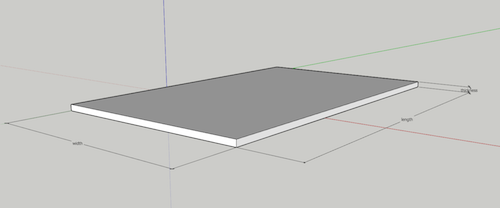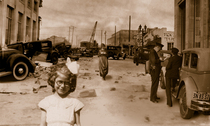
- A plate map is given in chapter 3, in section 3.2 on Olympic National Park. The study of these plates and how they move and interact with each other is called “plate tectonics.” ‹ Main Topics, Unit 2 up Textbook 2.2: Plate Tectonics 1, Yellowstone ›.
- If paired with Unit 3: Glaciers, GPS, and Sea Level Rise, this unit develops skills that students have the opportunity to then build on in a supplemental activity of Unit 3. This unit is an adaptation of Exploring plate motion and deformation in California with GPS.
- Assignment #3: Plate Tectonics Overview: In this assignment we will examine the ideas of continental drift and of sea-floor spreading that lead to the Theory of Plate Tectonics. This assignment is in two parts. In part #1 we’ll look at the characteristics of plate tectonics in our region where there are three types of active plate boundaries.

In order to calculate the weight of steel plate, one must know the steel plate thickness and the steel plate density or steel plate specific weight, normally expressed in pounds per cubic foot (lbs/ft3). The calculation of steel plate weight is essential to estimating the steel plate prices. The carbon steel density is 489.6 pounds per cubic foot while steel thickness is expressed in inches. In order to correctly calculate the steel plate weight the unit must be the same.

**For steel plate pricesclick here- for steel angle pricesgo here
The approach is either to change the thickness to feet and multiply the result by the density to get a unit weight per square foot or change the density to inches and multiply by the thickness to get unit weight per square inch. In either case the answer should be the same.Of some of the components most closely associated with the unit alignment. Rotor Stator Guide Bearing Figure 2.—Umbrella unit. 2.1 Thrust Bearings Thrust bearings support the axial load on a rotating shaft. On a vertical shaft hydrounit, the thrust bearing supports the entire rotating weight of the unit, as well as any hydraulic down thrust.
For instance to calculate the weight of ¼ inch thick steel plate, we need to convert the inches to feet. Since there are 12 inches in a foot, we divide the ¼ inches or .25 by 12 yield .0208 feet and multiply by the 489.6 pounds per cubic foot yields 10.2 pounds per square foot.
To go in the other direction we need to covert the density to inches first by taking the 489.6 pounds per cubic feet and divide it by 12 cubic inches or multiply 12 by itself 3 times yield 1728. The result of 489.6/1728 is .2833 pounds per cubic inches. So the unit weight per square inch is .2833x.25 = .0708 lbs/si. By multiplying the .0708 by 144 converting square inches to square feet, we get 10.2 lbs/sf.
 Refer to the table above for list of typical plate thickness with its associated weight. These were calculated using the method described above.
Refer to the table above for list of typical plate thickness with its associated weight. These were calculated using the method described above.The above calculation is very important in estimating the cost of steel plate because the steel plate prices are determined by weight when buying from steel mill or warehouses. This is how steel fabricators estimate cost of steel.
Different Plate Tectonics
Back toweight of steel plate
From weight of steel plate to all-concrete-cement.com
Plate Tectonic Map

